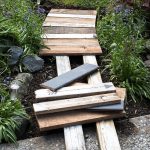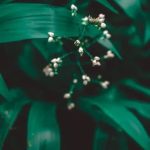Transform your outdoor space with the beauty of waterscaping plants and ideas for natural and created water gardens. Whether you have a sprawling backyard or a small patio, incorporating water features can add a sense of tranquility and serenity to your landscape. From colorful aquatic plants to soothing sounds of bubbling fountains, there are endless possibilities to explore when it comes to creating your own water oasis.
Waterscaping plants play a crucial role in enhancing the visual appeal of water gardens, providing not only aesthetic value but also serving as essential elements for maintaining a healthy ecosystem. These plants help oxygenate the water, provide shelter for aquatic life, and contribute to balancing the ecosystem within your garden. By carefully selecting the right combination of waterscaping plants, you can create a harmonious and sustainable environment that thrives all year round.
In this article, we will delve into the world of waterscaping plants and explore different ideas for designing natural and created water gardens. We will discuss the benefits of incorporating waterscaping plants in your garden, how to select the perfect location for your water feature, essential tools needed for creating a water garden, design inspiration for various water garden styles, as well as tips on maintenance and troubleshooting common issues.
Get ready to be inspired and discover how you can transform your outdoor space into a peaceful retreat with the magic of waterscaping plants.
The Benefits of Incorporating Waterscaping Plants in Your Garden
Waterscaping plants are a beautiful and essential addition to any water garden, providing both aesthetic appeal and environmental benefits. These plants not only enhance the overall look of the garden but also contribute to its ecosystem by providing food and shelter for aquatic life. By incorporating waterscaping plants in your garden, you can create a balanced and thriving habitat that supports a variety of flora and fauna.
One of the key benefits of using waterscaping plants in your garden is their ability to improve water quality. These plants help in natural filtration by absorbing excess nutrients, which helps prevent algae overgrowth and keeps the water clear and healthy for fish and other aquatic organisms. Additionally, waterscaping plants oxygenate the water through photosynthesis, creating a more sustainable environment for all living beings in the water garden.
Another advantage of incorporating waterscaping plants in your garden is their low maintenance requirements. Once established, these plants typically require minimal care, making them a great choice for busy gardeners or those new to water gardening. With proper selection and placement, waterscaping plants can thrive with little intervention, adding beauty to your garden without much effort on your part.
| Benefit | Description |
|---|---|
| Improved Water Quality | Waterscaping plants absorb excess nutrients, prevent algae overgrowth, and oxygenate the water. |
| Low Maintenance | Once established, these plants require minimal care, making them ideal for busy gardeners. |
Selecting the Perfect Location for a Natural Water Garden
When it comes to creating a natural water garden in your outdoor space, selecting the perfect location is key to its success. The first step is to consider the amount of sunlight the area receives throughout the day.
Most waterscaping plants thrive in full sun, so choosing a spot that gets at least 6-8 hours of sunlight is ideal. However, if you have plants that prefer shade, such as water lilies or lotus, you may need to find a location with some partial shade.
Another important factor to consider when choosing the location for your water garden is access to a water source. Whether you plan on installing a pond or a small fountain feature, having access to water for filling and maintaining your garden is essential. Additionally, you’ll want to make sure that the location has good drainage to prevent pooling or flooding during heavy rainfalls.
To create a harmonious and aesthetically pleasing natural water garden, consider the overall landscape and layout of your outdoor space. Try to integrate the water feature into the existing environment by placing it near other landscaping elements like trees, shrubs, or flower beds. This will help create a cohesive and balanced design that enhances the beauty of both the waterscaping plants and surrounding greenery.
- Consider sunlight exposure: Full sun or partial shade
- Ensure access to a water source for filling and maintenance
- Choose a location with good drainage to prevent pooling or flooding
- Integrate the water feature into the existing landscape for a cohesive design
Essential Tools and Equipment Needed for Creating a Water Garden
When creating a water garden, having the right tools and equipment is essential to ensure that your project runs smoothly and efficiently. From digging the pond to maintaining water quality, here are some essential items you will need to get started:
- Shovel: A sturdy shovel will be necessary for excavating the area where your water feature will be located. Make sure it is durable enough to handle the soil and rocks you may encounter.
- Pond Liner: This is one of the most crucial components of a water garden as it holds the water in place. Choose a high-quality liner that is designed to withstand UV rays and resist punctures.
- Pump and Filter System: To keep the water in your garden clean and circulating, you will need a reliable pump and filter system. This will help prevent stagnation and maintain the overall health of your waterscaping plants.
- Aquatic Plants: Of course, no water garden is complete without aquatic plants. These not only add beauty to your space but also help oxygenate the water and provide shelter for fish and other wildlife.
In addition to these basic tools, there may be other specialized equipment needed depending on the size and complexity of your water garden project. Consider investing in items such as a skimmer net, aquatic plant fertilizer, underwater lighting, and a test kit for monitoring water quality.
Whether you are planning a small backyard pond or a larger-scale water feature, having the right tools at your disposal will make the process more enjoyable and successful. Be sure to do your research on each item needed so that you can create a stunning water garden that thrives with healthy waterscaping plants.
Design Inspiration
When it comes to designing a natural water garden with waterscaping plants, the possibilities are endless. One popular idea is to create a serene pond surrounded by lush greenery and colorful flowers. This can provide a peaceful retreat where you can relax and enjoy the beauty of nature. Consider adding floating plants like water lilies or lotus flowers to add an elegant touch to your water garden.
Another creative idea for a natural water garden is to incorporate a flowing stream or waterfall. The sound of running water can be incredibly soothing and adds a dynamic element to your outdoor space. Combine different types of waterscaping plants along the stream banks, such as rushes, irises, and cattails, to create a diverse and visually appealing landscape.
For those looking for a more modern approach, consider adding a series of interconnected pools or basins to create a sleek and contemporary water feature. Incorporate architectural elements like fountains or sculptures for added visual interest. Choose waterscaping plants with clean lines and interesting textures, such as horsetail reeds or variegated sweet flag, to complement the modern aesthetic of your water garden.
| Key Ideas | Information |
|---|---|
| Serene Pond with Floating Plants | Create a peaceful retreat with water lilies or lotus flowers |
| Flowing Stream or Waterfall | Add the soothing sound of running water with rushes, irises, and cattails |
| Interconnected Pools for Modern Design | Incorporate fountains or sculptures with horsetail reeds or variegated sweet flag |
Creative Ways to Incorporate Water Features in Small Spaces
When it comes to creating a water garden, many people may think they need a large backyard or extensive space to incorporate water features. However, that is not the case. Even if you have a small outdoor area, there are creative ways to include water elements that will enhance the beauty of your space.
One idea for incorporating water features in small spaces is to opt for a container water garden. This involves using containers such as barrels, tubs, or even ceramic pots to create miniature aquatic environments. These container gardens can be placed on patios, balconies, or even indoors, making them perfect for those with limited outdoor space. You can plant waterscaping plants like dwarf cattails, water lilies, and mini lotus in these containers to add a touch of nature to your surroundings.
Another creative way to incorporate water features in small spaces is by installing a wall fountain or a bubbling rock feature. Wall fountains are mounted on walls and provide the relaxing sound of running water while adding visual interest to your space.
Bubbling rock features consist of a decorative rock or boulder with a hidden reservoir that bubbles up water, creating a soothing atmosphere. These compact water features are perfect for small gardens or courtyards where space is limited but the desire for tranquility is high.
For those with very limited outdoor space, consider adding a tabletop fountain or a small pondless waterfall feature. These compact water elements can be placed on tabletops or in corners of patios and provide the calming sights and sounds of flowing water without taking up much room. By incorporating these creative ideas for small spaces, you can enjoy the benefits of waterscaping plants and the serene ambiance of water gardens no matter how constrained your outdoor area may be.
Maintaining Your Water Garden
Maintaining a water garden requires regular care and attention to ensure the health and beauty of your waterscaping plants. Here are some essential tips to help you keep your water garden thriving.
Proper Water Quality Management
One of the most important aspects of maintaining a healthy water garden is ensuring proper water quality. Regularly test the pH levels, ammonia, nitrite, and nitrate levels in your pond or water feature. By maintaining balanced water parameters, you can promote healthy growth of waterscaping plants and prevent issues like algae blooms.
Pruning and Thinning Waterscaping Plants
Regular pruning and thinning of waterscaping plants are essential to prevent overcrowding and promote better air circulation in your water garden. Remove any dead or decaying foliage to prevent the build-up of organic matter, which can lead to poor water quality and potential plant diseases.
Seasonal Maintenance
Different seasons require different maintenance tasks for your water garden. In colder months, be sure to prepare your waterscaping plants for winter by trimming back any dead foliage and protecting them from freezing temperatures. During warmer months, monitor plant growth closely and adjust feeding schedules accordingly.
By following these tips for maintaining your water garden, you can ensure that your waterscaping plants remain healthy and vibrant throughout the year. Remember that regular maintenance is key to a thriving water garden that will bring beauty and tranquility to your outdoor space.
Troubleshooting Common Issues in Water Gardens
Algae, pests, and water quality are common challenges that water garden enthusiasts may face when maintaining their aquatic oasis. Algae growth is a natural occurrence in water gardens, as it thrives in sunlight and nutrient-rich environments. To combat algae overgrowth, consider incorporating floating plants like water lilies or lotus plants to provide shade and competition for nutrients. Additionally, adding oxygenating plants such as anacharis or hornwort can help reduce excess nutrients that fuel algae growth.
In terms of pest control, pesky invaders like mosquitoes can be a nuisance in water gardens. One effective solution is to introduce mosquito fish (Gambusia affinis) to feed on mosquito larvae and keep their population in check. It’s important to regularly monitor the population of these fish and ensure they have enough food supply to thrive. Additionally, installing a fountain or waterfall feature can help disrupt the stagnant water where mosquitoes lay their eggs.
Maintaining optimal water quality is crucial for the health of your waterscaping plants and aquatic life. Regularly test the pH levels, ammonia, nitrate, and nitrite levels in your water garden using test kits available at your local gardening store. Make sure to follow proper dosing instructions when using chemical treatments to adjust water parameters. Implementing a filtration system like a biofilter or UV sterilizer can also help improve water clarity and quality in your water garden.
By addressing issues related to algae overgrowth, pests, and maintaining good water quality, you can enjoy a vibrant and healthy water garden filled with lush waterscaping plants. Remember that regular maintenance and care are key to ensuring the longevity of your aquatic paradise. With the right strategies in place, you can troubleshoot common issues effectively and create a thriving ecosystem in your own backyard.
Waterscaping Plants
In conclusion, a water garden can truly transform any outdoor space into a tranquil oasis, enhancing the beauty and serenity of your surroundings. By incorporating waterscaping plants, you not only add visual appeal but also provide habitat for beneficial wildlife and help promote a balanced ecosystem. The choice of location, tools, and design inspiration all play a crucial role in creating a successful water garden that thrives with lush waterscaping plants.
When selecting the perfect species for your water garden, it is important to consider factors such as sunlight exposure, water depth, and overall maintenance requirements. From floating aquatic plants like Water Lilies and Lotus to submerged varieties like Hornwort and Anacharis, there are endless possibilities to choose from depending on your preferences and the specific conditions of your water garden. Additionally, incorporating emergent plants like Cattails or Water Irises can add height and texture to your landscape design.
Lastly, maintaining the health of your waterscaping plants is essential for the longevity and vibrancy of your water garden. Regular upkeep such as pruning, fertilizing, and monitoring water quality will ensure that your waterscaping plants continue to thrive. By following best practices for maintenance and troubleshooting common issues like algae overgrowth or pest infestations, you can enjoy a flourishing water garden that brings peace and tranquility to your outdoor space for years to come.

Welcome to my gardening blog! I am passionate about plants and enjoy sharing my knowledge and experiences with others. In this blog, I will write about everything related to gardening, from tips on how to get started to updates on my own garden projects.





